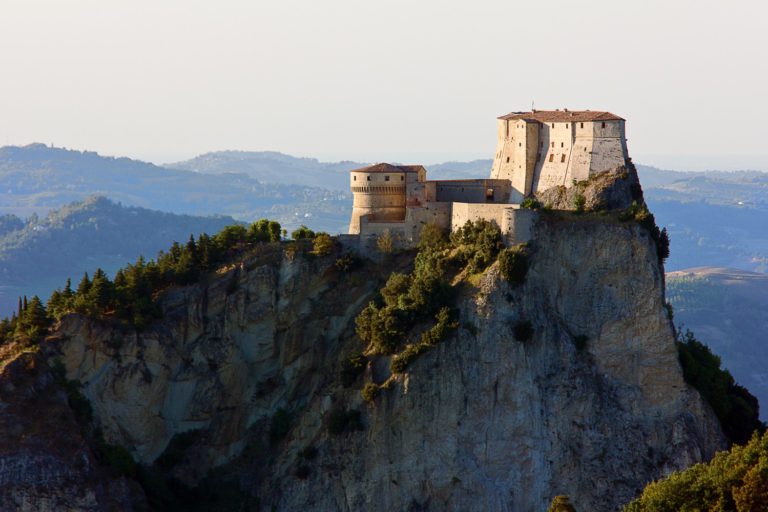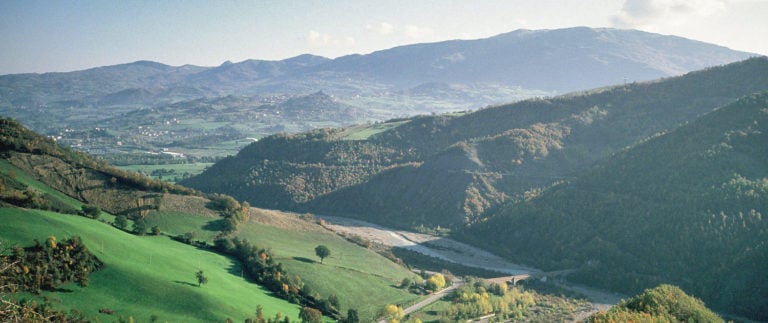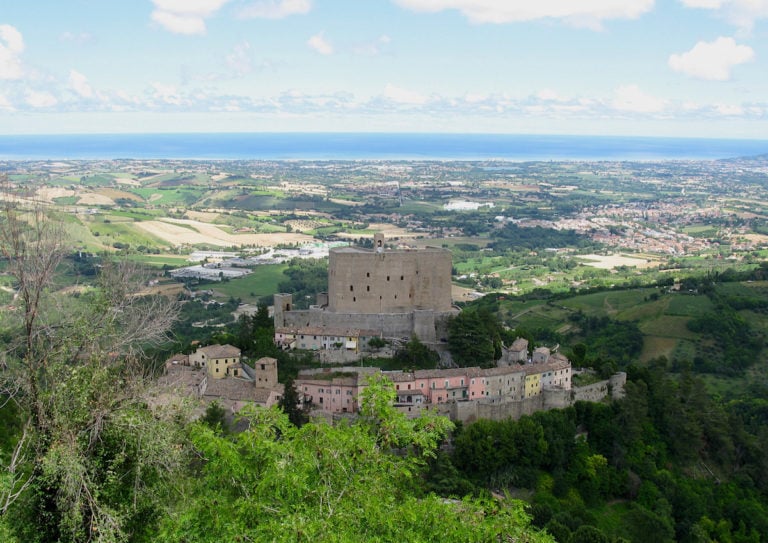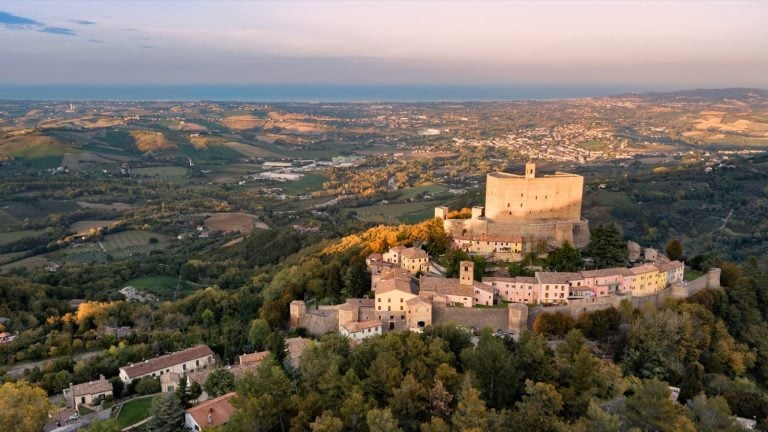The borderlands and lordships of Romagna were always torn between allegiance to the Papacy and the enticements of European rulers. This territory was full of wealthy merchants and traders who, as Machiavelli observed, were incapable of establishing territorial hegemony because they were too strong in fighting each other and too weak to prevail over others.
The powerful Malatesta family, the Papal States, and the Guidi Counts in Tuscan Romagna represented the evolution of defensive structures in the strategic chessboard of Renaissance Northern Italy. They left tangible signs of their dominion in the form of castles, towers and fortresses that still stand out on the hills of Romagna.
This area still preserves a vast historical and cultural heritage, as well as a rich natural heritage. Here, in fact, lie the primeval forests of the Casentino National Park, which owe their extraordinary state of preservation to the historical events of these lands. Here too are the Scardavilla Nature Reserve and the Onferno Caves, declared a UNESCO World Heritage Site.
The castles mentioned in this article are part of a network of manors still forming a line of fortifications stretching across the hills of Romagna.
Modigliana Castle
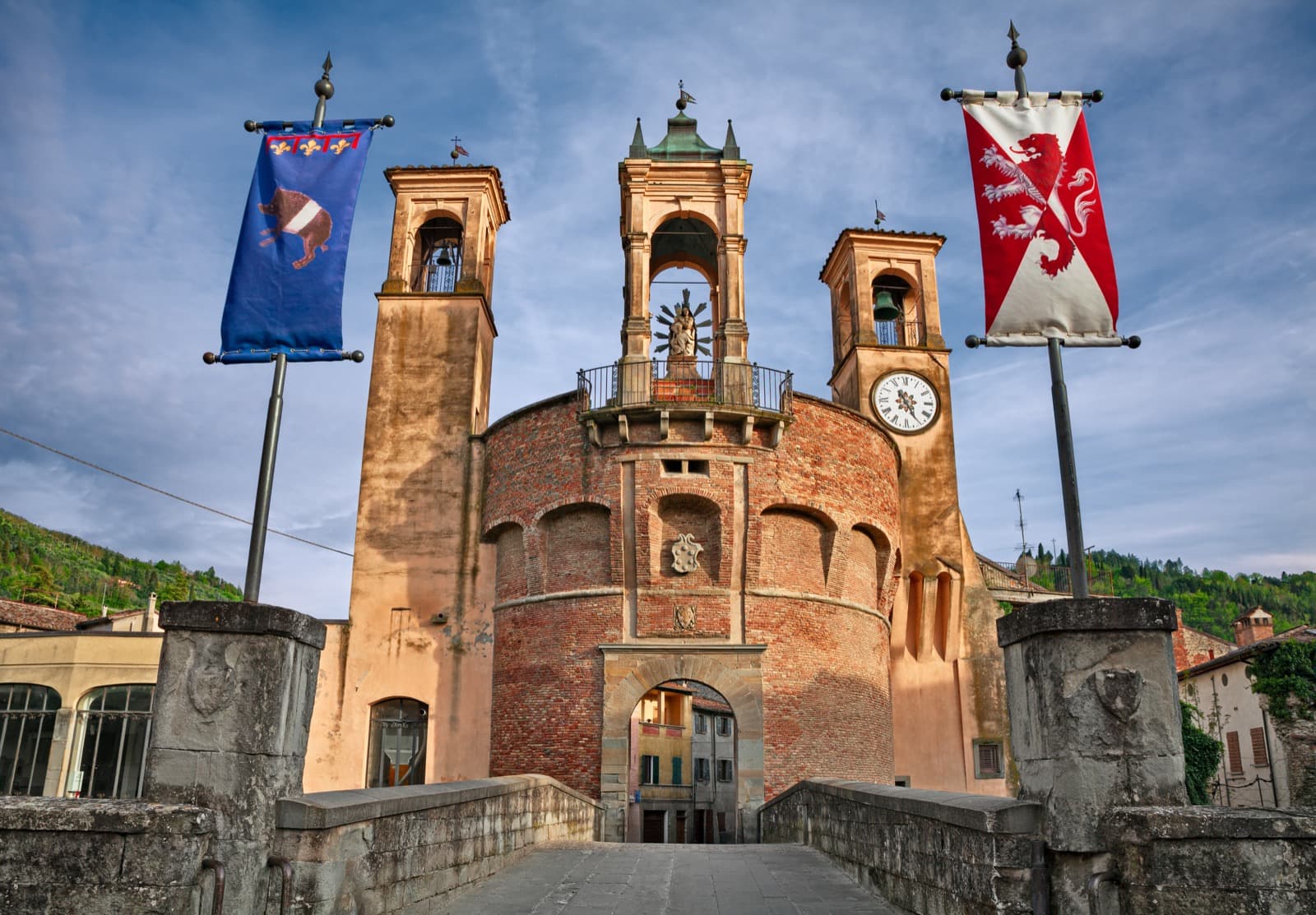
Modigliana Castle, also known as Rocca dei Conti Guidi, stands on the hills above the town of Faenza, where the Acerreta, Tramazzo and Ibola streams meet. Most likely founded around the 10th century, it was initially inhabited by the Franco-Germanic countess Enghelarda, who married the Tuscan count Tegrimo, thus giving rise to the Guidi dynasty. The latter established their first seat here in Modigliana, and the fortress remained in use and inhabited until 1377, when the territory came under the rule of Florence.
Dovadola Castle
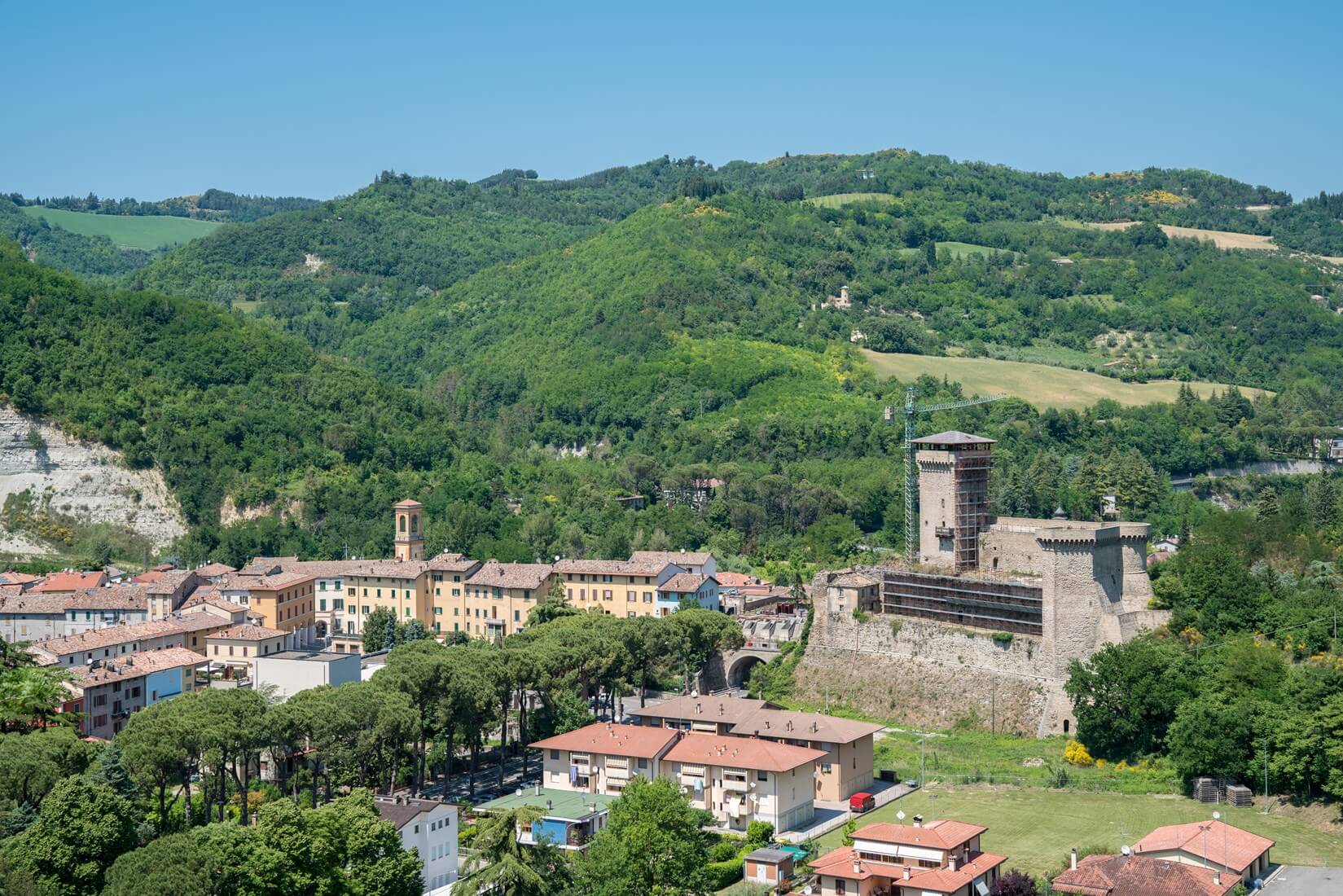
The first traces of the fortified settlement of Dovadola date back to Roman times, although the town centre grew and developed around the Castello dei Conti Guidi, built in the early 13th century. The fortress itself stands on a mountain spur overlooking the River Montone and still has an imposing keep measuring around 30 metres.
The peculiarity of this castle is due to the presence of a defensive wall on the northern part of the hill, which was built during the Florentine rule over Dovadola and this part of Romagna. Until the late 14th century, the fortress belonged to the local family of the Guidi Counts, who distinguished themselves as among the strongest supporters of the Guelph faction and for their friendship with the poet Dante Alighieri.
Castrocaro Castle
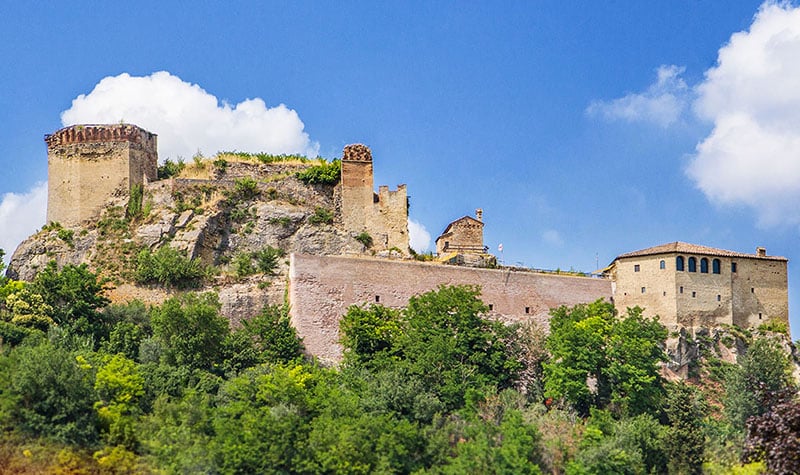
Nestled in the heart of Romagna’s Forlì region, the Castrocaro Fortress has stood on its cliff for over a millennium. This unique karst rock formation, known locally as Sasso Spungone, is the evidence of an ancient underwater reef dating back to the Pliocene epoch (10 million years ago), formed by organogenic arenaceous limestone, rich in marine fossils of considerable geological interest.
Thanks to its elevated position and difficult access, making it easy to protect the village, the cliff has been of strategic importance since prehistoric times, providing a safe refuge for its inhabitants in the various caves that are still visible today.
In the early Middle Ages, this same cliff marked the border between the Lombard kingdom and the Byzantine domains. It was probably during this period that the first stones of the tower were laid. From the Lombard period onwards, the history of Castrocaro can be divided into three main eras: feudal rule under imperial appointment, papal rule (12th century) and the Florentine period (13th century).
Now famous for its thermal waters, this town enjoyed years of great political and military prestige in past centuries. A past that is still remembered today during spectacular historical re-enactments.
Fortress Town of Terra del Sole
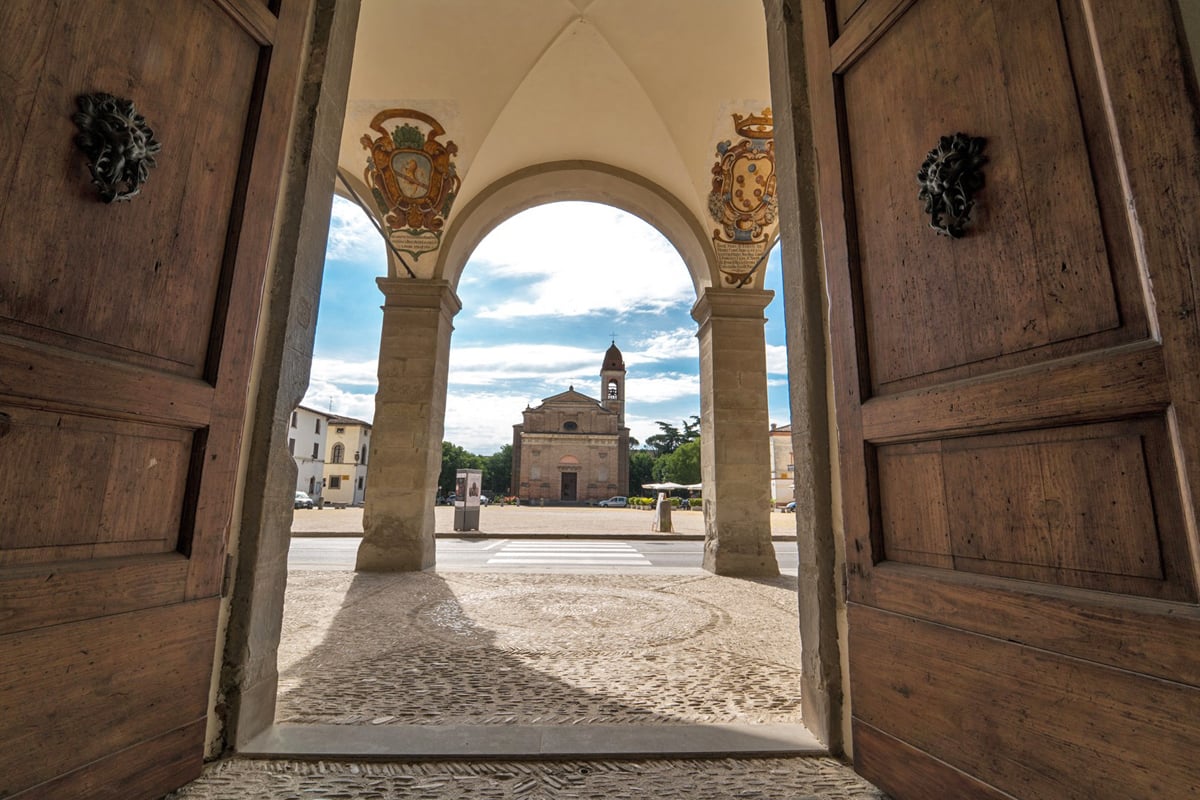
Terra del Sole is a fortress town that the Grand Duke of Tuscany, Cosimo de Medici, had built in 1564 as the administrative, judicial and military capital of the Tuscan possessions in Emilia Romagna. In terms of the “ideal city” envisaged by Renaissance thinking, it represented Florentine power and its strict judicial system. From an architectural point of view, the town was designed and built by the best architects and engineers of the time.
The entire architectural layout of Terra del Sole was constructed to fully meet the new military requirements that emerged with the introduction of new firearms: for this reason, the ancient pre-existing fortresses, such as those of Castrocaro and Montepoggiolo, were considered obsolete. The design of Terra del Sole represents not only an advanced model of military architecture, but also a rare model of “people-friendly” urban planning, which is still valid today, both for its symmetrical and perspective layout and for the skilful relationship between spaces and volumes.
Castello di Sorrivoli
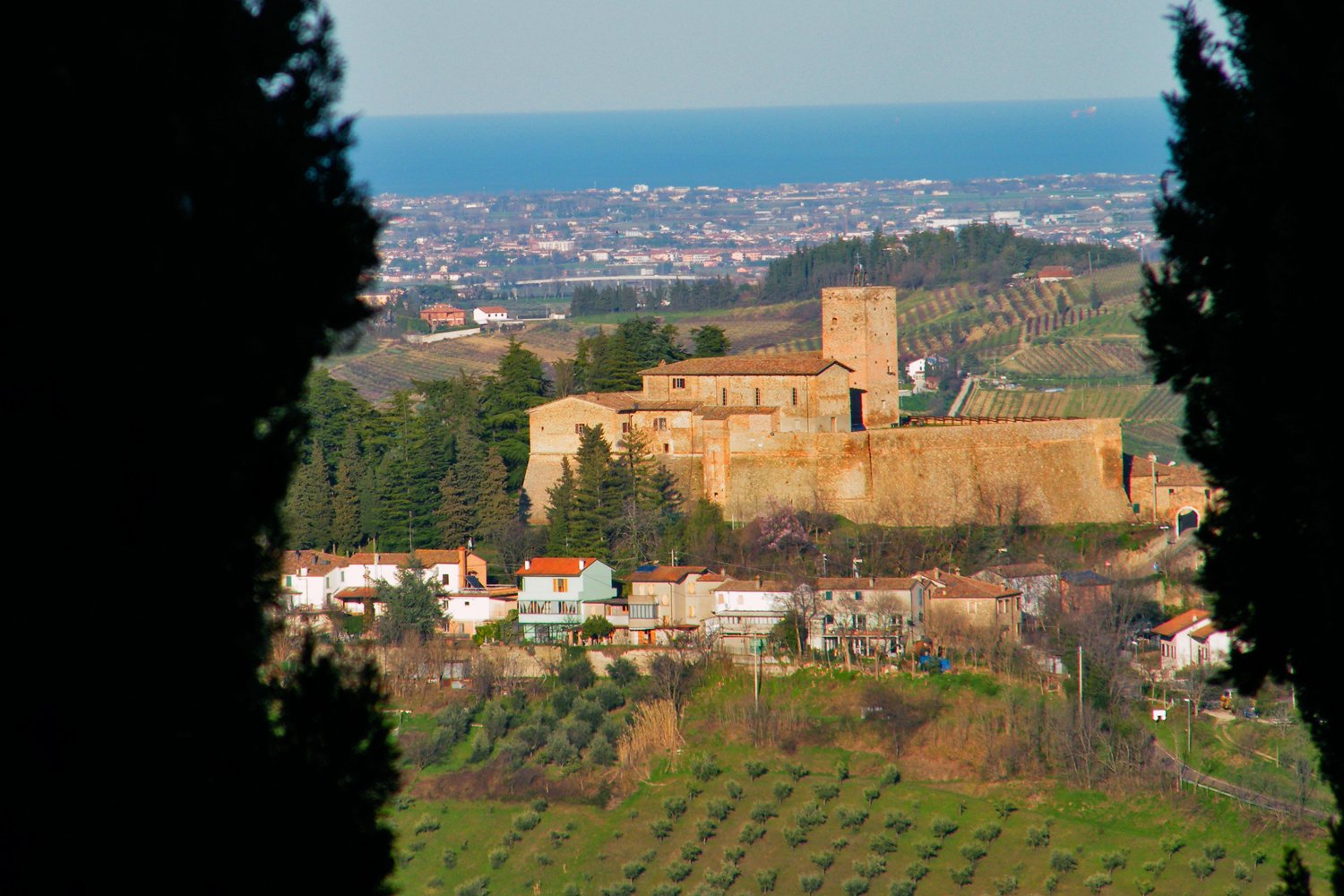
The name Sorrivoli originally referred to the numerous streams that surrounded the hill, but the castle is also mentioned as Sorbetulum. It was owned by the Archbishops of Ravenna since the 10th century. The village of Sorrivoli, which in past centuries was the most densely populated castle in the Romagna area, still shows the features of a fortified medieval village, dominated by the fortress that was donated to the Diocese of Cesena after the war.
Sorrivoli Castle was owned by the Archbishops of Ravenna, then by the Malatesta family, the Papal States, and the Roverella family of Cesena in the 15th century. The castle then passed to the Allocatelli Fabbri family and, after the bombings of 1944, to the parish. Today it houses a rehabilitation community and a restaurant.
Longiano Castle
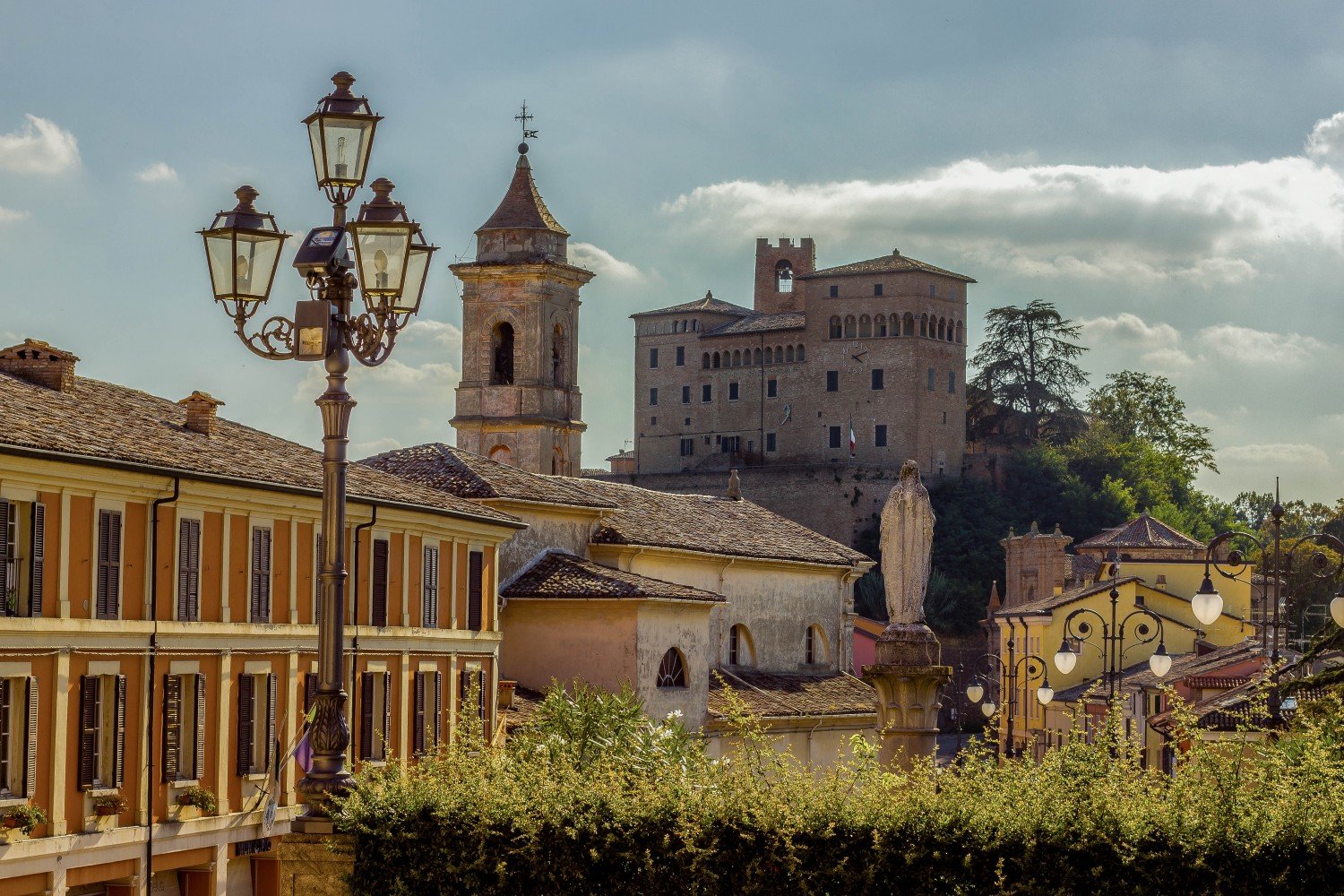
The Malatesta Castle stands on the fertile hills of Longiano, which in 1992 was awarded the title of ‘ideal village’ by the European Community. Originally a castle belonging to the Church of Rimini, in 1059 it passed under the control of the Malatesta family, returning to their rule in 1295.
When the Malatesta power collapsed, the castle passed to the Holy See, which in 1519 gave it as a fief to Count Guido Rangone of Modena, advisor to King Francis I of France. The count modified the structure of the castle, partially removing the Malatesta fortifications and building the loggia, which can still be visited today.
The Malatesta Castle in Longiano now houses the Foundation dedicated to the poet Tito Balestra, whose collection includes almost 300 works of highly significant Italian 20th-century painters such as Maccari, De Pisis, Guttuso, Manzù, Vespignani, Rosai, Mafai and Campigli. It also houses engravings by Morandi, Zancanaro, Goya, Chagall, Matisse and other artists related to Tito Balestra.
Verucchio Castle
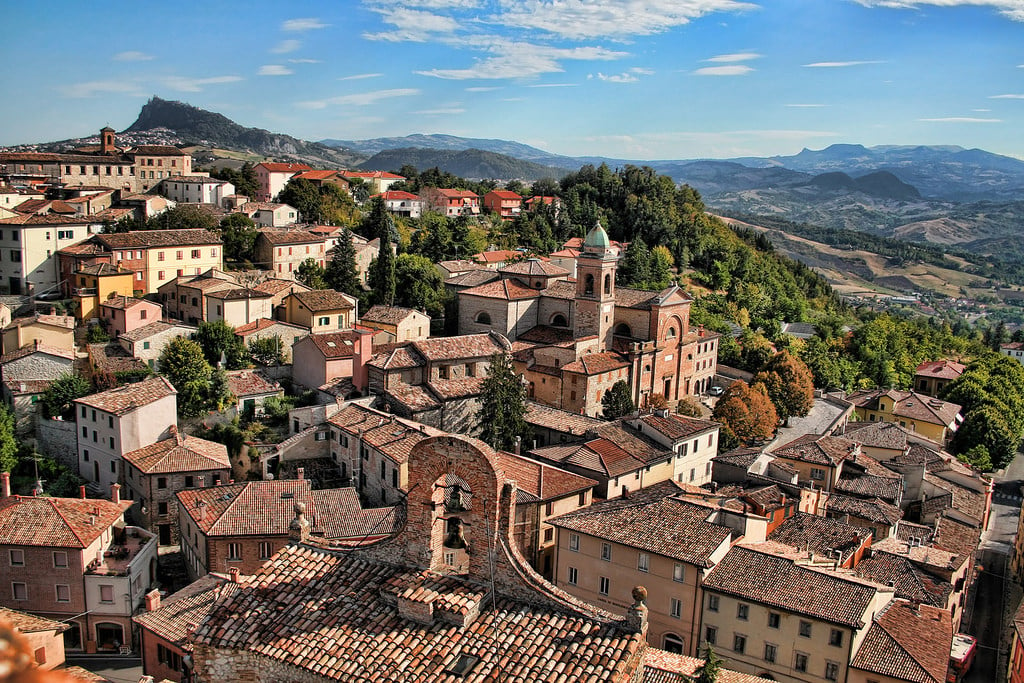
Known as the ‘Cradle of the Malatesta’ family, who ruled this village for about three centuries, Verucchio stands on a rocky spur overlooking the Marecchia valley.
The historic centre is formed by the union of two different castles: del Sasso and Passarello. The Rocca del Sasso is one of the most evocative Malatesta fortifications, featuring architectural elements built in different periods between the 12th and 18th centuries. It was from here that the ‘Mastin Vecchio’ conquered Rimini in 1295 and founded the Malatesta Seignory.
Inside, visitors can see the imposing Great Hall, various rooms hosting exhibitions and displays, models showing the different stages of construction of the fortress, a representation of Federico da Montefeltro’s siege in 1463, and the 13th-century keep.
The Rocca di Passerello stood on the mountain opposite the Sasso. In 1600, the convent of the nuns of St. Chiara was built on its ruins. The village of Verucchio also boasts a thousand-year history linked to the Amber Road, now illustrated in the archaeological museum, which preserves unique finds of extraordinary beauty.
Montefiore Conca Castle
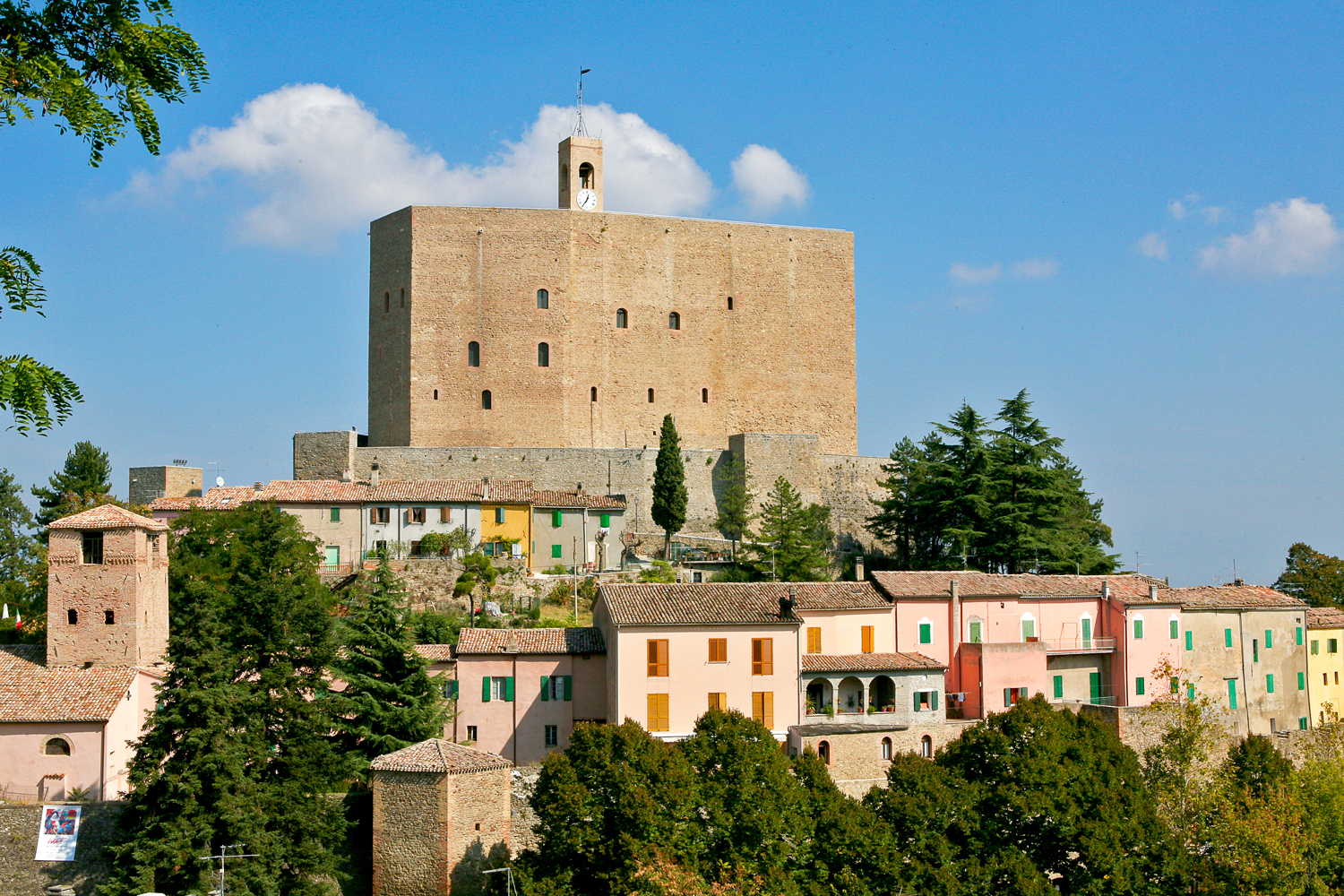
It is one of the best preserved centres of the Malatesta seignory. Its fortress dominates the Conca valley down to the sea, rising imposingly above the wooded landscape and surrounding olive groves and vineyards.
Although there is evidence of earlier settlements, it was from the 14th century onwards that the village of Montefiore experienced a period of splendour thanks to the powerful Guelph family of Malatesta, vicars of the Pope in this part of Romagna and Marche. In 1347, Louis the Great, King of Hungary, stayed within its walls with his entire court. Malatesta, known as “the Hungarian”, is responsible for the extraordinary frescoes depicting battle scenes and portraits of ancient heroes, rare examples of 14th-century secular painting by Jacopo Avanzi.
On the castle’s walkways, you can imagine the footsteps of the soldiers who once guarded the fortress, while further down, starting from Piazza Libertà, a pleasant footpath (known as the Donna Costanza walk) leads around the village.
Author

Walter Manni
Explorer and Adventurer: loves sailing the oceans, climbing the highest mountains and surfing on the waves of the web
You may also like
10 unmissable Castles of Malatesta lordship
by Walter Manni /// September 5, 2013
Dolce Vita in Valmarecchia: an itinerary among hamlets and hills
by Elisa Mazzini /// June 7, 2016

Interested in our newsletter?
Every first of the month, an email (in Italian) with selected contents and upcoming events.
